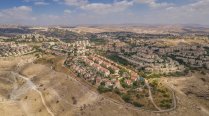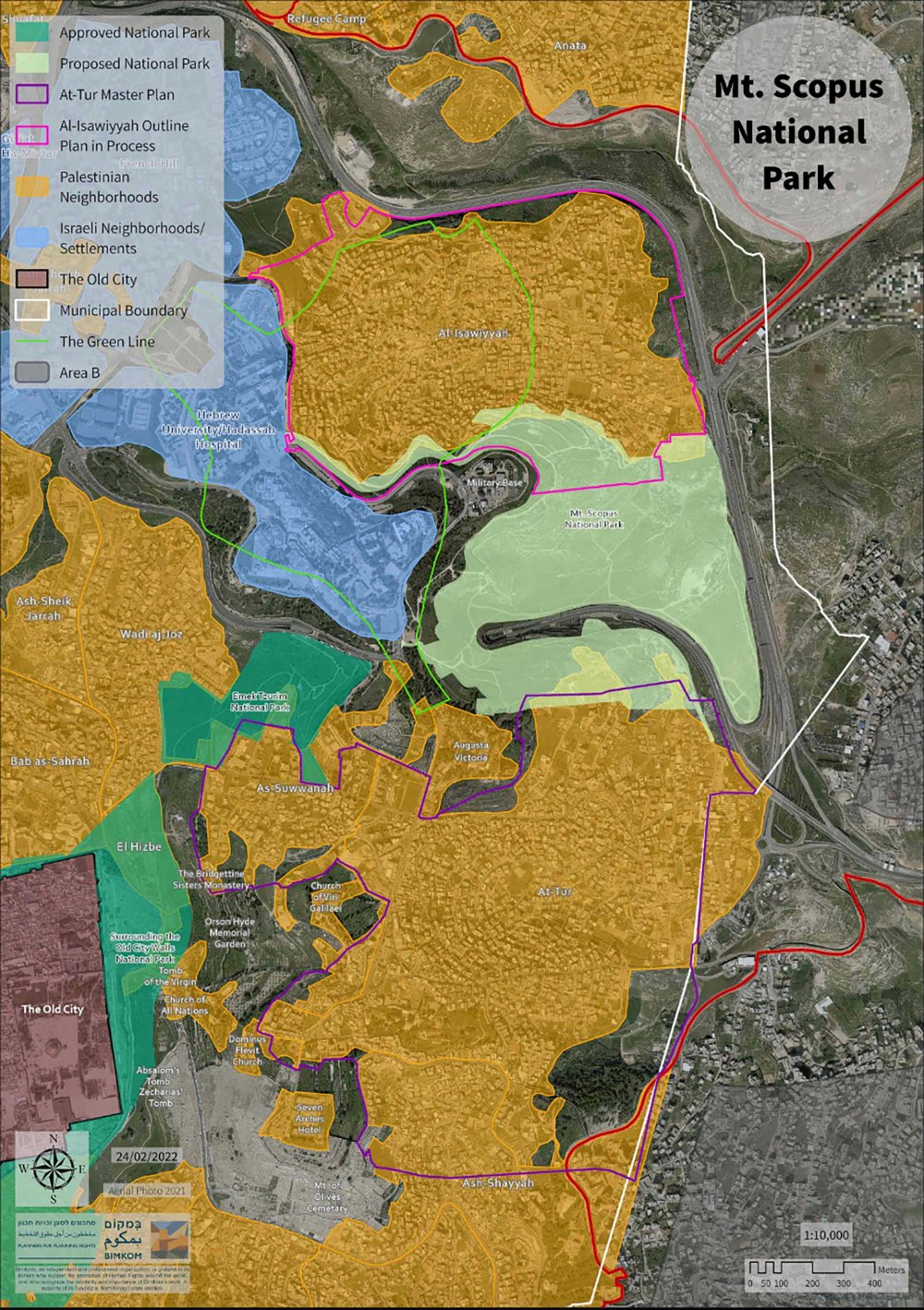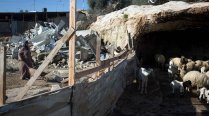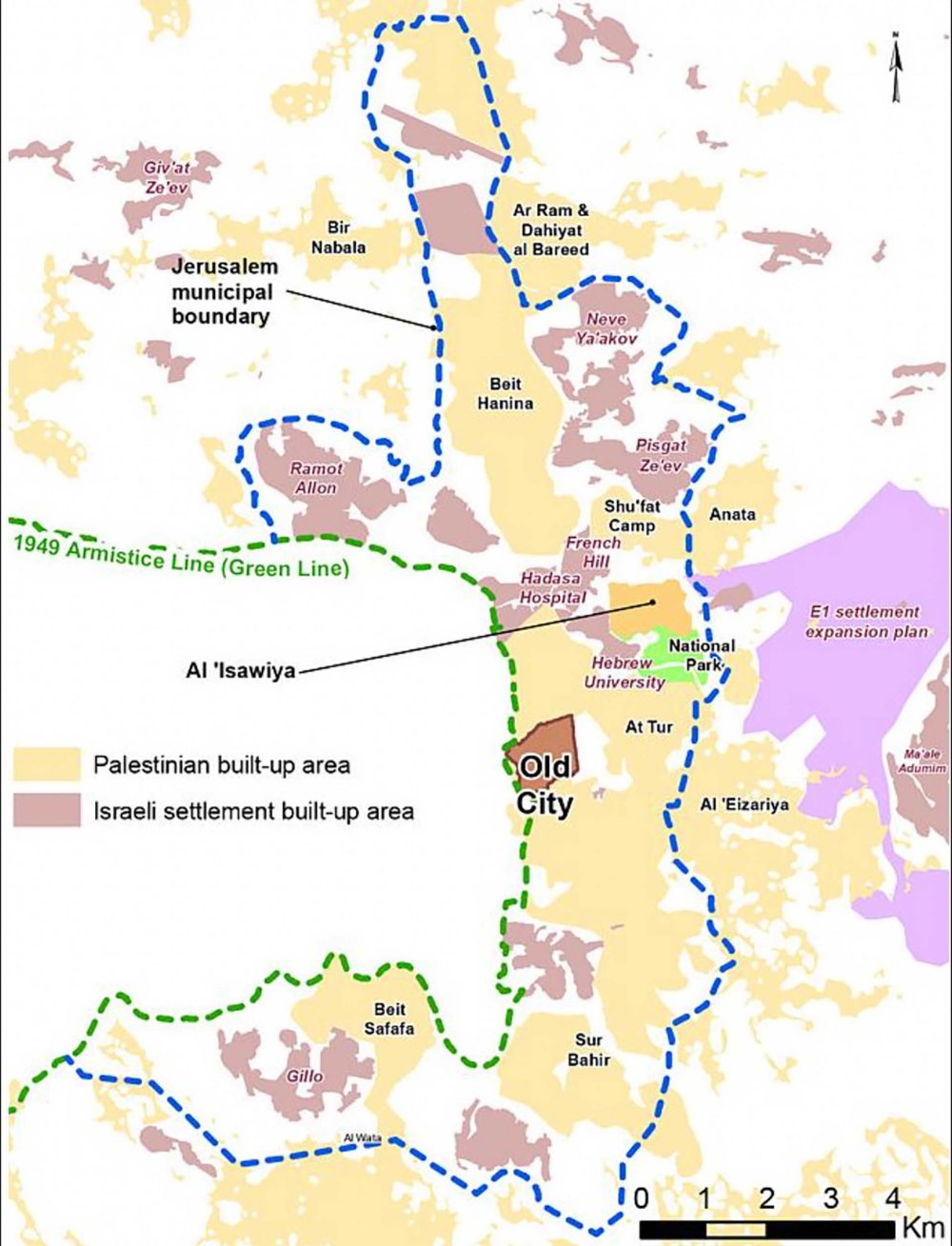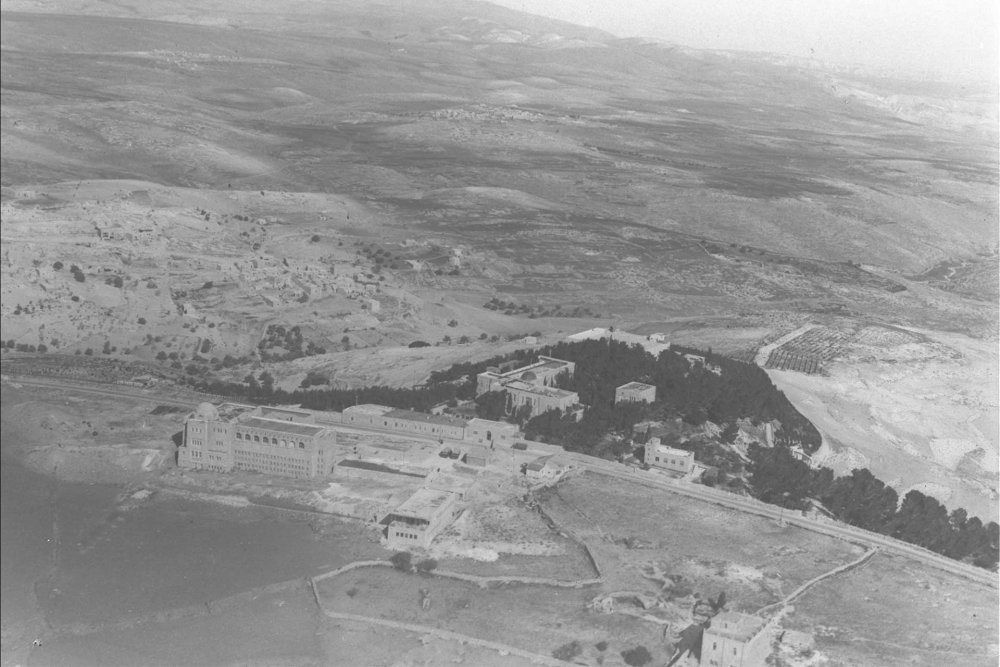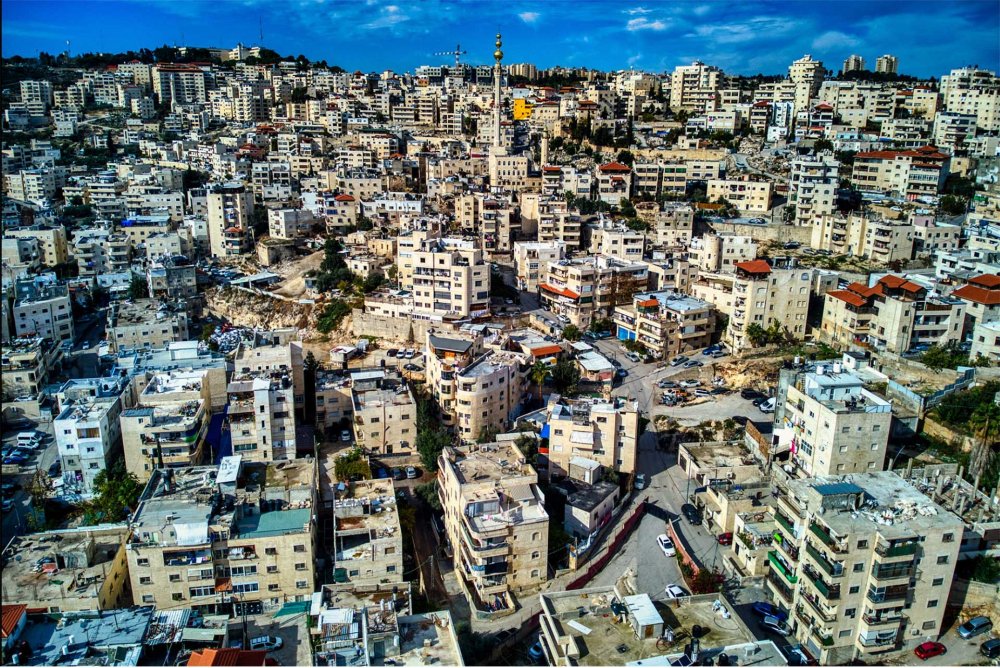On March 5, 2024, the Jerusalem Municipality’s District Planning Committee held a hearing on objections filed against the Mount Scopus Slopes National Park plan (TPS 1195114). The plan seeks to designate the land between the Palestinian neighborhoods of al-‘Isawiyya and al-Tur in occupied East Jerusalem as a national park,1 which means Palestinians in these neighborhoods would be barred from any further construction in the area.
According to Bimkom, an Israeli planning rights organization and one of the main parties filing an objection to the plan, the planning committee could take weeks to release its decision on whether to approve or reject the plan based on these objections.
“Most of the point of these plans is to create facts on the ground and make sure the land isn’t built on by landowners for housing purposes. So, it’s more of a land grab,” Sari Kronish, an architect at Bimkom, explained.2


